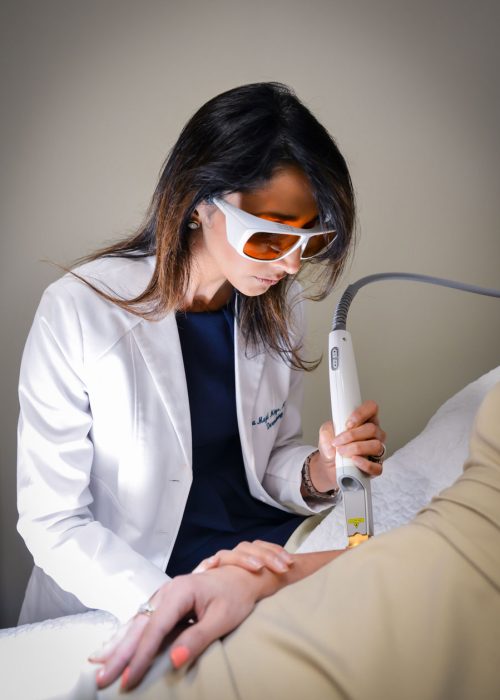Mohs surgery
Today, Mohs surgery has come to be accepted as the single most effective technique for removing Basal Cell Carcinoma and Squamous Cell Carcinoma (BCCs and SCCs), the two most common skin cancers. It is indicated for certain areas of the body and face and/or recurrent skin cancers.
Mohs surgery is a surgical technique that removes layers of skin containing Basal Cell Carcinoma or Squamous Cell Carcinoma, until only cancer-free tissue remains. This technique, also known as Mohs micrographic surgery, has a cure rate of 98% or higher and is known as the most effective treatment for skin cancers in anatomic areas where tissue preservation is prioritized due to its micrographic control, which lends to precise tissue removal.
We offer this service in the comfort of our office ensuring that your entire skin cancer diagnosis, treatment, and closure is taken care of in one setting.

WHAT TO EXPECT ON YOUR MOHS DAY:
- It is very important for you to keep your appointment. This is a special type of surgery that requires additional technicians and laboratory involvement.
- Please plan to be at office 15 minutes prior to your appointment. You may eat breakfast and take all of your necessary medications the day of procedure unless otherwise specified by our office.
- You will get an opportunity to read the consent for the procedure in detail and get any questions you may have answered.
- The Doctor will come in and mark the skin cancer. A local numbing medication (lidocaine) will be used to numb the skin.
- The Doctor will then cut the skin cancer out with a small margin in a specific fashion and take the tissue to our in-house pathology lab for processing.
- The tissue processing will take approximately 30 minutes performed by a histo-technician.
- The doctor will then review the tissue slides under the microscope to evaluate if any skin cancer cells present or the lesion is all clear. If the tissue slide shows no evidence of remaining cancer, the doctor will then close the wound. If there are residual cancer cells, the doctor will notate the positive margin and return to your room to remove further tissue.
- This process continues until the Doctor has verified that the entire lesion is free of cancer (multiple stages may be taken off your skin to make sure clearance is achieved).
- You will leave with post care instructions and a follow up visit scheduled.
- You may resume normal activities unless specified by the Doctor.
Please call our office for any further questions prior to your procedure. We look forward to taking care of you.
